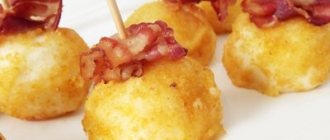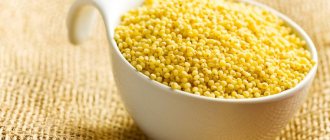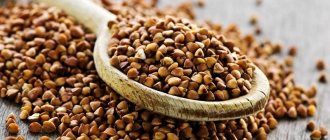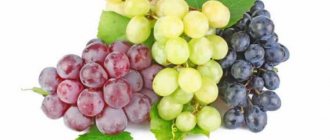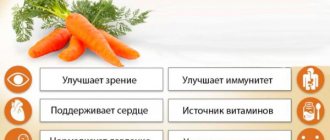Is it possible to gain weight from potatoes, and how to reduce its calorie content?
The calorie content of potatoes is not as high as those who go on a diet believe.
It turns out that young potatoes contain only 66 kcal. per 100 g. If you prepare it correctly, you can get great benefits. Potatoes in our latitudes are a revered guest on every table. It can be eaten at any time of the year. There are so many dishes prepared from potatoes that it is almost impossible to remember everything at once. We can no longer imagine a day without soup with potatoes, hot mashed potatoes with a cutlet, okroshka, etc. Fried, boiled, stewed potatoes, in pancakes and zrazy, dumplings with potatoes, country-style potatoes and fries, chips, in their jackets and baked - and how many more varieties there are!
Many consider this product harmful for those who watch their figure. Not everyone knows how many calories are in potatoes, but the myth about their high calorie content and harm for those losing weight has taken root in people’s minds. It is believed that if you eat potatoes every day, you can gain extra pounds. Is it so?
How many calories are in mashed potatoes?
Mashed potatoes are a familiar dish to everyone. It is suitable for baby food and diet food, as well as for people with stomach and intestinal diseases. The calorie content of mashed potatoes depends on the ingredients that are included in its composition, for example, butter and milk. Mashed potatoes will benefit the body, since in addition to its pleasant taste, it is very easily digestible. This dish goes great with a variety of vegetables, such as spinach or Jerusalem artichoke. In addition, mashed potatoes will not cause an allergic reaction. The only contraindication may be individual hypersensitivity.
How to cook correctly?
In order not to destroy all the beneficial properties of potatoes, you need to learn how to cook them correctly:
- Before cooking, the product is poured with so much water that it only covers the tubers no more than the thickness of a finger. A large amount of liquid dissolves all useful substances. This also applies to jacket potatoes.
- After boiling, the heat on the stove should be reduced so that the product is only slightly simmering.
- When boiling potatoes, the lid of the pan should be slightly open so that the water does not boil away.
- Without a lid, the root vegetable will take much longer to cook.
- After peeling, potatoes should not be in water for more than half an hour.
Beneficial features
Potatoes, which are completely ordinary and familiar to everyone, are a storehouse of useful substances. Its rich composition contains a significant amount of proteins and phosphorus, as well as amino acids necessary for the functioning of the body.
Read also: How to treat white plaque on gooseberries
Potatoes are famous for their high content of phosphorus and potassium. Potassium actively participates in metabolic processes, promoting the removal of excess fluid from the body. This property is useful for people suffering from heart and kidney diseases, whom doctors and nutritionists advise to follow a special potato-egg diet.
Vitamin C, contained in large quantities in potatoes, helps maintain the elasticity of blood vessels and also reduces the risk of respiratory diseases. The beneficial effects of vitamin C on the nervous system are also known. In addition to vitamin C, potatoes contain vitamins B, A, E and PP.
Potatoes are one of the healthiest vegetables that help fight stomach and intestinal diseases. And the most famous component of its composition - starch - even helps improve memory by reducing cholesterol in the blood and liver.
What are the benefits of crushed potatoes?
- Vitamin B6
is involved in maintaining the immune response, processes of inhibition and excitation in the central nervous system, in the transformation of amino acids, the metabolism of tryptophan, lipids and nucleic acids, promotes the normal formation of red blood cells, and maintaining normal levels of homocysteine in the blood. Insufficient intake of vitamin B6 is accompanied by decreased appetite, impaired skin condition, and the development of homocysteinemia and anemia. - Vitamin C
is involved in redox reactions, the functioning of the immune system, and promotes the absorption of iron. Deficiency leads to loose and bleeding gums, nosebleeds due to increased permeability and fragility of blood capillaries. - Vitamin K
regulates blood clotting. A lack of vitamin K leads to an increase in blood clotting time and a decreased level of prothrombin in the blood. - Potassium
is the main intracellular ion that takes part in the regulation of water, acid and electrolyte balance, and is involved in the processes of conducting nerve impulses and regulating blood pressure. - Cobalt
is part of vitamin B12. Activates enzymes of fatty acid metabolism and folic acid metabolism. - Copper
is part of enzymes that have redox activity and are involved in the metabolism of iron, stimulates the absorption of proteins and carbohydrates. Participates in the processes of providing oxygen to the tissues of the human body. Deficiency is manifested by disturbances in the formation of the cardiovascular system and skeleton, and the development of connective tissue dysplasia. - Molybdenum
is a cofactor for many enzymes that ensure the metabolism of sulfur-containing amino acids, purines and pyrimidines. - Chromium
is involved in the regulation of blood glucose levels, enhancing the effect of insulin. Deficiency leads to decreased glucose tolerance.
Recipe: Crushed potatoes. Calorie, chemical composition and nutritional value.
Nutritional value and chemical composition of “Crushed Potatoes”.
The table shows the nutritional content (calories, proteins, fats, carbohydrates, vitamins and minerals) per 100 grams of edible portion.
| Nutrient | Quantity | Norm** | % of the norm in 100 g | % of the norm in 100 kcal | 100% normal |
| Calorie content | 75.8 kcal | 1684 kcal | 4.5% | 5.9% | 2222 g |
| Squirrels | 2.2 g | 76 g | 2.9% | 3.8% | 3455 g |
| Fats | 1 g | 56 g | 1.8% | 2.4% | 5600 g |
| Carbohydrates | 14 g | 219 g | 6.4% | 8.4% | 1564 g |
| Organic acids | 0.2 g | ~ | |||
| Alimentary fiber | 1.1 g | 20 g | 5.5% | 7.3% | 1818 |
| Water | 63.3 g | 2273 g | 2.8% | 3.7% | 3591 g |
| Ash | 0.886 g | ~ | |||
| Vitamins | |||||
| Vitamin A, RE | 2.4 mcg | 900 mcg | 0.3% | 0.4% | 37500 g |
| beta carotene | 0.016 mg | 5 mg | 0.3% | 0.4% | 31250 g |
| Vitamin B1, thiamine | 0.097 mg | 1.5 mg | 6.5% | 8.6% | 1546 g |
| Vitamin B2, riboflavin | 0.056 mg | 1.8 mg | 3.1% | 4.1% | 3214 g |
| Vitamin B4, choline | 8.86 mg | 500 mg | 1.8% | 2.4% | 5643 g |
| Vitamin B5, pantothenic | 0.242 mg | 5 mg | 4.8% | 6.3% | 2066 g |
| Vitamin B6, pyridoxine | 0.242 mg | 2 mg | 12.1% | 16% | 826 g |
| Vitamin B9, folates | 6.444 mcg | 400 mcg | 1.6% | 2.1% | 6207 g |
| Vitamin C, ascorbic acid | 16.11 mg | 90 mg | 17.9% | 23.6% | 559 g |
| Vitamin E, alpha tocopherol, TE | 0.081 mg | 15 mg | 0.5% | 0.7% | 18519 g |
| Vitamin H, biotin | 0.081 mcg | 50 mcg | 0.2% | 0.3% | 61728 g |
| Vitamin K, phylloquinone | 1.5 mcg | 120 mcg | 1.3% | 1.7% | 8000 g |
| Vitamin RR, NE | 1.4499 mg | 20 mg | 7.2% | 9.5% | 1379 g |
| Niacin | 1.047 mg | ~ | |||
| Macronutrients | |||||
| Potassium, K | 457.53 mg | 2500 mg | 18.3% | 24.1% | 546 g |
| Calcium, Ca | 8.06 mg | 1000 mg | 0.8% | 1.1% | 12407 g |
| Silicon, Si | 40.276 mg | 30 mg | 134.3% | 177.2% | 74 g |
| Magnesium, Mg | 18.53 mg | 400 mg | 4.6% | 6.1% | 2159 g |
| Sodium, Na | 4.03 mg | 1300 mg | 0.3% | 0.4% | 32258 g |
| Sera, S | 25.78 mg | 1000 mg | 2.6% | 3.4% | 3879 g |
| Phosphorus, P | 46.7 mg | 800 mg | 5.8% | 7.7% | 1713 g |
| Chlorine, Cl | 46.72 mg | 2300 mg | 2% | 2.6% | 4923 g |
| Microelements | |||||
| Aluminium, Al | 692.7 mcg | ~ | |||
| Bor, B | 92.6 mcg | ~ | |||
| Vanadium, V | 120.02 mcg | ~ | |||
| Iron, Fe | 0.725 mg | 18 mg | 4% | 5.3% | 2483 g |
| Yod, I | 4.03 mcg | 150 mcg | 2.7% | 3.6% | 3722 g |
| Cobalt, Co | 4.028 mcg | 10 mcg | 40.3% | 53.2% | 248 g |
| Lithium, Li | 62.024 mcg | ~ | |||
| Manganese, Mn | 0.1369 mg | 2 mg | 6.8% | 9% | 1461 g |
| Copper, Cu | 112.77 mcg | 1000 mcg | 11.3% | 14.9% | 887 g |
| Molybdenum, Mo | 6.444 mcg | 70 mcg | 9.2% | 12.1% | 1086 g |
| Nickel, Ni | 4.028 mcg | ~ | |||
| Rubidium, Rb | 402.8 mcg | ~ | |||
| Selenium, Se | 0.216 mcg | 55 mcg | 0.4% | 0.5% | 25463 g |
| Strontium, Sr | 7.48 mcg | ~ | |||
| Fluorine, F | 24.17 mcg | 4000 mcg | 0.6% | 0.8% | 16549 g |
| Chromium, Cr | 8.06 mcg | 50 mcg | 16.1% | 21.2% | 620 g |
| Zinc, Zn | 0.29 mg | 12 mg | 2.4% | 3.2% | 4138 g |
| Zirconium, Zr | 2.44 mcg | ~ | |||
| Digestible carbohydrates | |||||
| Starch and dextrins | 12.083 g | ~ | |||
| Mono- and disaccharides (sugars) | 1 g | max 100 g | |||
| Glucose (dextrose) | 0.483 g | ~ | |||
| Sucrose | 0.483 g | ~ | |||
| Fructose | 0.081 g | ~ | |||
| Essential amino acids | 0.58 g | ~ | |||
| Arginine* | 0.081 g | ~ | |||
| Valin | 0.098 g | ~ | |||
| Histidine* | 0.024 g | ~ | |||
| Isoleucine | 0.069 g | ~ | |||
| Leucine | 0.103 g | ~ | |||
| Lysine | 0.109 g | ~ | |||
| Methionine | 0.021 g | ~ | |||
| Methionine + Cysteine | 0.04 g | ~ | |||
| Threonine | 0.078 g | ~ | |||
| Tryptophan | 0.023 g | ~ | |||
| Phenylalanine | 0.079 g | ~ | |||
| Phenylalanine+Tyrosine | 0.153 g | ~ | |||
| Nonessential amino acids | 0.944 g | ~ | |||
| Alanin | 0.078 g | ~ | |||
| Aspartic acid | 0.201 g | ~ | |||
| Glycine | 0.081 g | ~ | |||
| Glutamic acid | 0.211 g | ~ | |||
| Proline | 0.074 g | ~ | |||
| Serin | 0.103 g | ~ | |||
| Tyrosine | 0.072 g | ~ | |||
| Cysteine | 0.019 g | ~ | |||
| Saturated fatty acids | |||||
| Saturated fatty acids | 0.1 g | max 18.7 g | |||
| 14:0 Miristinovaya | 0.002 g | ~ | |||
| 16:0 Palmitinaya | 0.057 g | ~ | |||
| 18:0 Stearic | 0.012 g | ~ | |||
| Monounsaturated fatty acids | 0.134 g | min 16.8 g | 0.8% | 1.1% | |
| 16:1 Palmitoleic | 0.004 g | ~ | |||
| 18:1 Oleic (omega-9) | 0.129 g | ~ | |||
| Polyunsaturated fatty acids | 0.066 g | from 11.2 to 20.6 g | 0.6% | 0.8% | |
| 18:2 Linolevaya | 0.064 g | ~ | |||
| 18:3 Linolenic | 0.066 g | ~ | |||
| Omega-3 fatty acids | 0.1 g | from 0.9 to 3.7 g | 11.1% | 14.6% | |
| Omega-6 fatty acids | 0.1 g | from 4.7 to 16.8 g | 2.1% | 2.8% |
The energy value of crushed potatoes is 75.8 kcal.
Primary Source: Created in the application by the user. Read more.
** This table shows the average levels of vitamins and minerals for an adult. If you want to know the norms taking into account your gender, age and other factors, then use the “My Healthy Diet” application.
Not harmful, but useful
Properly cooked potatoes are not only tasty, but also healthy. This vegetable contains carbohydrates, proteins and very little fat. If you eat 300 grams of tubers per day, you can provide the body with the daily requirement of potassium and phosphorus. By the way, in terms of the content of the former, potatoes generally hold the record among all food products.
Potassium salts remove excess water from the body. Therefore, the root vegetable is recommended to be included in the diet of people suffering from various kidney and heart diseases. Those who serve potato dishes during feasts with large amounts of alcohol also act very wisely. This way the chances of recognizing yourself in the mirror the next morning are much greater: the vegetable prevents the appearance of swelling.
This root vegetable is also useful for those who monitor blood cholesterol levels. Potato starch has the ability to reduce it, thus preventing the development of sclerosis.
Contains potatoes and large amounts of ascorbic acid. Young potatoes are especially rich in it, 100 grams of which can contain up to 20 mg of vitamin C. This is about a third of the daily requirement of an adult. However, over time, the vitamin in the tubers is destroyed, so that by spring, the root vegetables, which have lain in storage all winter, are practically deprived of it.
However, other useful substances, such as folic acid, magnesium, phosphorus, vitamins B and PP, easily tolerate long-term storage, so even fruits that have survived winter can be very beneficial for the body.
It remains to add that you can eat potatoes even during periods of exacerbation of ulcers and gastritis. It does not irritate the mucous membrane of the stomach and intestines.
To preserve as much of the beneficial substances of potatoes as possible during cooking, there are several tricks:
– Do not pour a lot of water while cooking potatoes. All vitamins that are included in its composition are water soluble;
– For the same reason, you should not store peeled potatoes in cold water for more than 20 minutes;
– You cannot cook potatoes over high heat; the water in the pan should boil only a little;
– When boiling potatoes, cover the pan with a lid, leaving only a small hole for steam to escape.
Can potatoes be harmful?
Harm from eating boiled potatoes may be associated with:
- with the presence of solanine, a toxic substance. However, this only applies to green and sprouted potato tubers;
- with starch, which leads to an increase in blood sugar (limited for diabetes). You can reduce its content and calorie content by first soaking the peeled potatoes in cold water for several hours, and then changing it before cooking;
- presence of nitrates. Their quantity also decreases after soaking in water.
Calorie content of potato dishes
Most dishes with the popular root vegetable can hardly be called dietary, so people trying to get rid of extra pounds should refrain from eating them.
Options for first, second courses and baked goods with potatoes:
- noodle soup – 69 kcal;
- chicken broth soup – 50 kcal;
- dumplings – 220 kcal;
- chicken stew – 150 kcal;
- country-style potatoes – 130 kcal;
- fried pies – 200 kcal;
- potato pancakes – 220 kcal;
- casserole with mushrooms – 170 kcal;
- homemade chips – 500 kcal;
- stewed potatoes with cabbage and onions – 95 kcal.
To satisfy the body's needs for such important substances and elements as phosphorus, potassium, carbohydrates, you need to eat about 300 g of vegetables per day. A larger amount will increase your waist by several centimeters.
When choosing the least high-calorie dishes, you don’t have to worry about gaining extra pounds. A starchy vegetable consumed in moderation will only benefit the body.
In fried potatoes per 100g of product:
Belkov – 8
Fat - 18.9
Carbohydrates – 10.1
Calories – 203.3 kcal.
The calorie content of French fries is significantly higher; in addition, they contain more fat and carbohydrates, but less protein. To prepare it, more oil is used, which in fast food may not be the freshest, which adds calories and carcinogens. 100g of such potatoes can contain from 400 to 500 kcal.
How to make fried potatoes less calorie?
- Fried potatoes get most of their calories from oil. Therefore, the first advice is to reduce its amount.
- Get a frying pan with a Teflon or ceramic coating, this will reduce oil consumption, and with it the number of calories that remain in the potatoes.
- Try cooking with a little butter or olive oil.
- Place the potatoes in the hot frying pan and stir constantly until they are well mixed with the oil. Do not forget to cover the pan with a lid - the moisture will not evaporate so intensely, which will help cook the potatoes.
Let's talk about calories
Boiled potatoes: counting calories
How many calories are in boiled potatoes? You will be surprised! Per 100 grams of product - no more than 70 kcal. However, the number of calories directly depends on the method of cooking and serving the dish. For example, cooked with sour cream, fried onions or butter, the root vegetable increases the calorie content significantly.
How many calories are in boiled potatoes per 100 grams of product, prepared in various ways, is indicated in the following list:
- boiled in the skin (“country style” or in its uniform) - 77 kcal;
- boiled without peel - 80 kcal;
- boiled with butter - 127 kcal;
- boiled with onions fried in vegetable oil - 125 kcal;
- crushed with hot milk - 97 kcal;
- boiled, crushed with mushrooms - 102 kcal.
Mashed potatoes with pieces of lard are very high in calories. It reaches 171 kcal. For dumplings with potatoes, the energy value of the dough is added. Oven-baked potatoes (in their jackets) - 98 kcal.
Potato calorie table
| Name of the dish | Number of calories (kcal) per 100 g. |
| Boiled | |
| In uniform | 77 |
| Without peel | 80 |
| Young without skin | 66 |
| With butter | 127 |
| Young with butter and herbs | 84 |
| With fried onions | 125 |
| Puree | |
| With milk | 97 |
| With butter and milk | 133 |
| With fried mushrooms | 102 |
| With fried lard | 171 |
| Baked | |
| In uniform | 80 |
| Without peel | 77 |
| Country style | 117 |
| Fried | |
| With vegetable oil | 204 |
| In lard | 212 |
| Stewed with chicken and vegetables | 145 |
| Fries | 312 |
| Potato dishes | |
| Potato soup | 40 |
| Casserole | 110 |
| Fried pies | 185 |
| Baked pies | 150 |
| Draniki (pancakes) | 268 |
| Zrazy | 268 |
| Vareniki | 148 |
| Chips | |
| "Lays" | 510 |
| "Estrella" | 518 |
| "Pringles" | 540 |
| Homemade in the microwave | 118 |
| Baby potato | |
| With dill and vegetable oil | 128 |
| Baked with meat | 130 |
| Baked with cheese | 115 |
| Baked with cheese and butter | 158 |
| Chicken gratin | 261 |
calories in boiled potatoes - weight loss resources
If you liked this article, try our newsletter. It's free .
Get the latest information on what works for weight loss delivered straight to your inbox. We do not share your email address. Privacy Policy
Sponsored
The tools and information on the Weight Loss Resources website are intended to assist in losing weight and maintaining weight and do not provide medical advice. If you have, or think you may suffer from, a medical condition that you should consult with your doctor before starting a weight loss regimen and/or or exercise. If you decide to start exercising after a period of relative inactivity, you should start very slowly and consult your doctor if you experience any discomfort, stress or any other symptoms. If you experience discomfort or pain during exercise, do not continue. The tools and information on the Weight Loss Resources website are not intended for pregnant or breastfeeding women or persons under 18 years of age. Copyright © 2000-2020 Weight Loss Resources Ltd. All product names, trademarks, registered trademarks, service marks or registered service marks mentioned in any part of the Weight Loss Resources website are the property of their respective owners.
.
